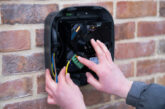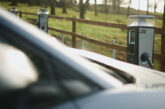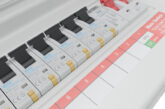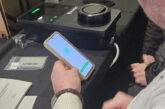
Matt Parton, Product Development Manager with leading fire and security solutions supplier, ESP, looks at the use of CO detectors and where they may be best utilised in fire alarm systems.
The smoke generated by every fire contains a mixture of particles and chemicals. The content of smoke will depend on the type of material being burned. All smoke contains carbon monoxide, carbon dioxide and soot (particulate matter). In addition to these common elements of smoke, sulphur dioxide, nitrogen oxides, a variety of hydrocarbons, metals and dioxins, and the like, may also be present.
One type of detector used in fire detection and fire alarm systems is the carbon monoxide (CO) detector. As all smoke contains elements of incomplete combustion, carbon monoxide will always be present in a fire.
This article considers the use of CO detectors and where they may be best utilised.
Fire detection and fire alarm systems utilise a range of detectors to accommodate a variety of fires. However, it’s important that the means of detection is suitable for the nature of the fire and that any detector conforms to the appropriate Standard.
Means of operation of a CO detector
There are multiple ways in which carbon monoxide can be detected. The most common method is for electrodes to be immersed in a chemical solution that senses change in current flow when CO is present in dangerous quantities.
A second method involves metal-oxide semiconductor (MOS) sensors whose resistance changes depending on the quantity of CO within the chamber. With such detection a signal is generated and either a sounder operates or the control and indicating equipment (CIE) is triggered to sound an alarm.
A third method of CO detection uses a biomimetic sensor. The sensor contains a gel which changes colour when it absorbs CO, so an alarm is triggered.
Permitted use in fire detection and fire alarm systems
The commentary detailed in Clause 10.1.4 of BS 5839-6 shows that carbon monoxide fire detectors are point-type detectors which respond to the carbon monoxide present during incomplete combustion. Such detectors are not equivalent to smoke detectors in their response to fire.
One caveat to the use of CO detectors within fire detection and fire alarm systems is that those conforming to BS EN 50291 shouldn’t be used in such systems. CO detectors conforming to BS EN 50291 are only to be used for detecting the presence of CO potentially found in gas boilers, fires or solid fuel systems.
However, this doesn’t preclude them being interconnected with the fire detection and fire alarm system in a dwelling.
CO detectors conforming to BS EN 54- 26 are permitted for use in Grade A systems conforming to BS 5839-6 and to fire detection and fire alarm systems conforming to BS 5839-1.
It’s often the case that CO detectors are incorporated within multi-sensor heat detectors conforming to BS ISO 7240-8 or BS EN 54-30 or multisensory smoke and heat detectors conforming to BS EN 54-31.
The benefits associated with CO detectors are that they react more rapidly to fire than heat detectors and are immune to certain environmental factors which may affect smoke detectors, such as dust, steam and cigarette smoke.
Maintenance is a key factor where CO detectors are used. As the most common types utilise a chemical means of detection, it’s important that the sensor or detector is changed every seven years.
Installation of CO detectors
In domestic premises, CO detectors and alarms shouldn’t be the sole means of fire detection in Grade D1/D2 fire detection and fire alarm systems. Clause 10.2e) of BS 5839-6 recommends that CO detectors, and multisensory detectors containing CO detection, are only used for Grade A systems where an annual maintenance regime exists, or where a fault warning is given to indicate the need to replace the electrochemical cell.
Where CO detectors are used within a circulation space, there should be an equal or higher number of smoke detectors within the circulation space (Clause 10.2f)). Furthermore, CO detectors shouldn’t be installed in kitchens.
Clause 21 of BS 5839-1 details the types of detectors recognised for use within non-domestic premises. Clause 21.2g details where CO detectors may be reasonably used:
• Any area in which the use of a heat detector would be acceptable, other than those areas where the principal fire hazard comprises flammable liquid resulting in rapid flaming fire,
• Rooms opening onto escape routes in Category L3 systems,
• All escape routes within Category L3 and L4 systems, provided the CO detectors are used in conjunction with smoke detectors,
• Any other area where the fire hazard exists where test evidence shows that CO detectors offer adequate fire protection.
Conclusion
Care should be taken in the selection and use of CO detectors when used within fire detection and fire alarm systems. CO detectors may be combined with heat and smoke detection in multisensory devices. However, even in non-domestic premises, their use should be limited to those fires which are not rapidly flaming as they best operate where smouldering fires exist.
Whilst the CO detectors used for sensing carbon monoxide created by open fires, gas boilers and the like may be interconnected with a fire detection and fire alarm system in a dwelling (Grade D1 or D2 system), they are not to be used as a means of fire detection.
Get more details on ESP’s range of fire and CO detectors here
Find more industry feature articles here









